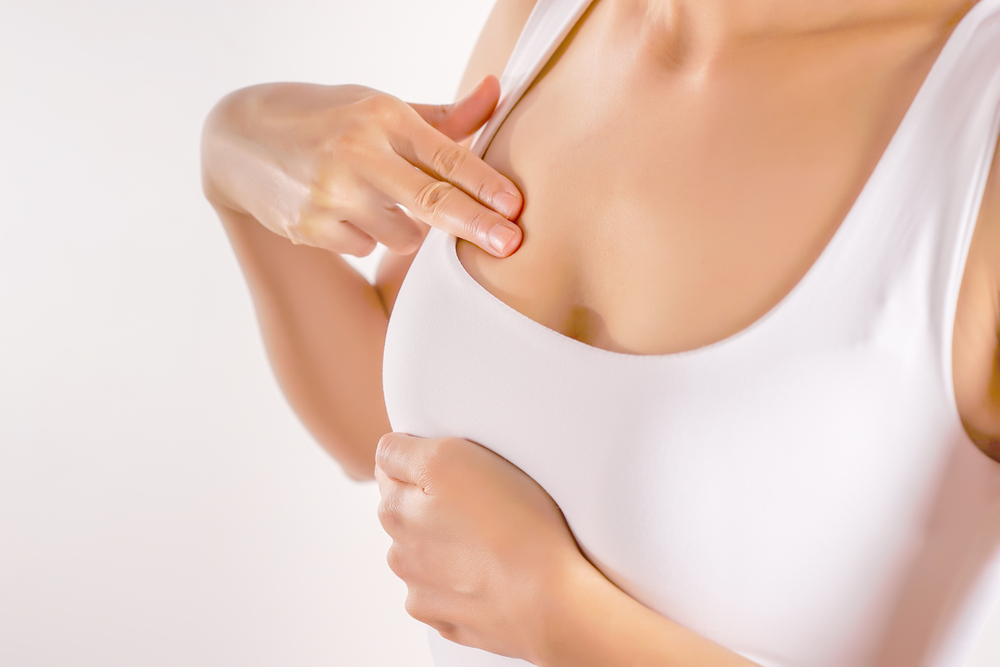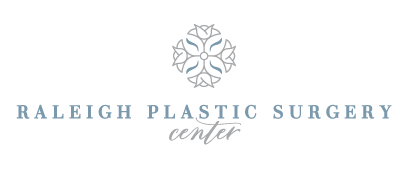Breast Augmentation
Breast Augmentation remains the number one procedure performed by cosmetic surgeons in the U.S. Breast Augmentation helps women with small or misshapen breasts feel more confident about their physical appearance. Patients report a significant boost in self-confidence both with and without clothing, as well as, in bathing suits. Women of all ages seek Breast Augmentation with breast implants performed at Raleigh Plastic Surgery Center.
Breast Implant Choices – What are the differences between Silicone and Saline implants?
There are many options with breast enlargement which will be discussed during your visit at Raleigh Plastic Surgery Center. The two basic choices of implant type are saline-containing implants and silicone gel-containing implants. In 2006, silicone gel implants became widely available for use in all Breast Augmentation. Saline devices were utilized prior to this from 1992, after silicone gel implants were taken off the market by the FDA. Saline implants are still used and can be very effective and enhance the breasts just as well as silicone gel implants. However, saline devices usually are more palpable and potentially can cause visible rippling in very thin patients. Saline implants do have the advantage of having easy detection of leakage.
We allow you to view and observe silicone and saline implants during a comprehensive evaluation with your board-certified plastic surgeon to help you arrive at the best choice. Sometimes, the decision-making can be assisted with 3-D computer imaging here in our office. In order to get an accurate assessment of cup size, we use a combination of proper measurements of your physical characteristics and allow you to review before and after photographs of patients.

The Procedure
Breast Augmentation is performed under a general anesthetic under the care of our board-certified anesthesiologist here at Raleigh Plastic Surgery Center. Incision choice is discussed preoperatively but most commonly is performed through an inframammary fold crease (the crease under the breast.) Perareolar and transaxillary approaches are sometimes used as well. In many cases, submuscular placement under the pectoralis muscle is preferred however subglandular placement (over the muscle) may be recommended depending on circumstances. These decisions are carefully discussed and made during the preoperative consultation. The procedure lasts approximately one to one and a half hours. Safety of this operation is paramount and special attention to the prevention of infection and meticulous tissue handling is made. Patients wake up in a postoperative brassiere with relatively small dressings and dissolvable sutures. Drains are almost never used in Breast Augmentation surgery. The risks of surgery include hematoma, fluid collection, or infection. These are extremely rare. Capsular contracture, which is the excessive scarring that forms around an implant is much less common than in years past with newer technology. Avoidance of the exposure of the implant to the skin surface with the use of Keller Funnel helps reduce the risk of the capsular contracture. A change in nipple sensitivity and asymmetry is also possible as well as malposition of the implant. Our physicians use the newest technologies in our AAAHC accredited surgical center for Breast Augmentation surgeries.
The Recovery
Breast Augmentation usually requires approximately one week of limited activity. Many patients can return to sedentary work within three to five days. Patients are counseled to avoid strenuous exercise for four weeks but walking and other light activity are allowed immediately. Pain after the surgery is generally minimized by the use of the intraoperative local anesthetics and oral narcotics, or, an anti-inflammatory. Many patients report feeling tight and frequently feel as if the implants are sitting high on the chest. This is more frequent in submuscular positioning and resolves within a few weeks. Patients are seen one week after surgery and then one month postop. Final results of Breast Augmentation are not judged until three months postoperatively.
For more tips on how to create a post-op recovery space at home visit our blog!
FAQ
Q: Do the implants last forever?
A: Breast implants are not considered lifetime devices. Over time, there is a known rate of leakage of all implants, however, there is no consensus on a recommendation for the arbitrary removal of implants and exchange since implants may last 20-30 years or more. Leakage rates of silicone gel implants start to increase after seven to eight years but still remain relatively low at the ten year mark. Unfortunately, detection of leakage in silicone implants is difficult to determine by physical examination and an MRI is recommended to determine leakage. A detailed discussion with your plastic surgeon about monitoring of implants should occur before surgery and during your follow-up. Saline devices generally are easier to monitor since a leakage is heralded by flattening of the breast- a distressing event but harmless. Silicone devices do not deflate in the same way and may be undetectable. Fortunately, the new manufacturing techniques have made implants less likely to cause local problems if they do leak.
Q: How do I know what size I will be?
A: Size prediction is difficult since cup size varies from brassiere manufacture and body habitus. However, the vast majority of women are quite satisfied with their cup size. Determining the appropriate size of breast implant is a relatively complex process that involves a combination of means including 3-D imaging, potentially using the external sizers, and a review of photographs of other women with implants that appeal to you. The use of photographic 3-D imaging is helpful but not 100% predictive of the exact implant that best suits your body. Dimensional planning utilizing a variety of measurements of your body is critical in determining the right profile, size, and volume of the implant based on your chest circumference and breast width, and tissues characteristics.



